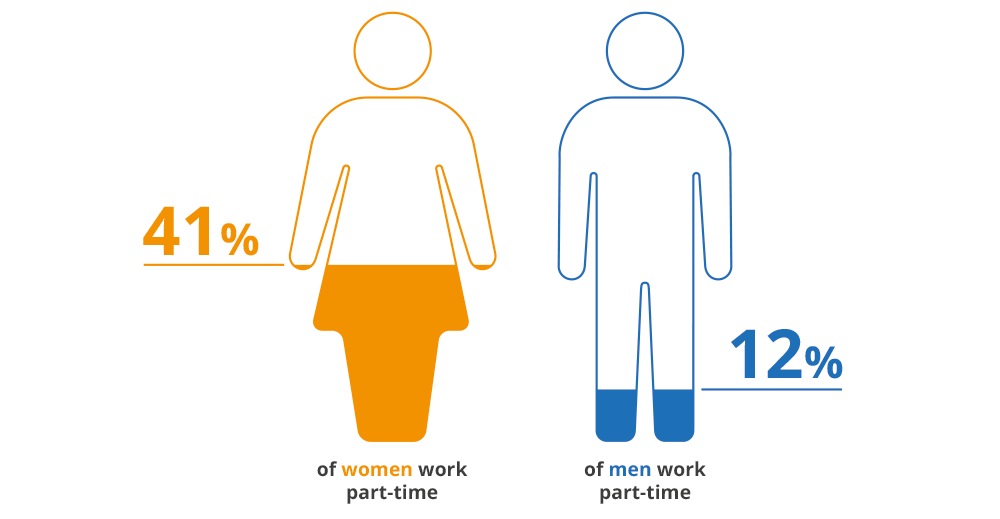The gender pay gap – what is it and what affects it?
As Jane Austen (almost) said: it is a truth universally acknowledged that men (generally) get paid more than women.
But do they get paid more than women for doing the same work? That is harder to answer.
The data published today in the Annual Survey of Hours and Earnings (ASHE) will give us the most up-to-date information on the pay gap between men and women.
The gender pay gap has fallen but remains steady in recent years
The gender pay gap for full-time employees in 2016 was 9.4%
This means average pay for full-time female employees was 9.4% lower than for full-time male employees. This gap is down from 17.4% in 1997.
The gap for all employees (full-time and part-time) has reduced from 19.3% in 2015 to 18.1% in 2016. This gap is down from 27.5% in 1997.
Gender pay gap over time, by full-time and part-time work, UK, 1997 to 2016
Reasons for the gap
The main factors explaining why women tend to earn less than men are:
- part-time work
- type of occupation
- having and caring for children
Part-time work
Percentage of men and women who work part-time, UK, April to June 2016
Source: Labour Force Survey
Part-time workers – both men and women – earn less, on average, per hour than their full-time counterparts.
A much higher proportion of women work part-time – 41%, compared with only 12% of men. This is why the gap for all employees – full-time and part-time together – is higher than for full-time employees
Interestingly, the gender pay gap for part-time employees alone was minus 6.0% in 2016. This means female part-time employees earned 6.0% more than male part-time employees.
Occupation
Another factor that affects the gender pay gap is that women tend to work in occupations which offer lower salaries. The size of the gender pay gap also varies between occupations.
The chart below shows a higher proportion of women than men working in sectors such as administration and caring, which tend to be lower paid.
Percentage of male and female employees in different occupational groups, UK, April to June 2016
Having and caring for children
When looking at the differences in pay by age group for full-time employees, the gap is relatively small up to and including those aged 30 to 39.
From 40 upwards, the gap is much wider. This is likely to be connected to women taking time out of the labour market to have children.
Taking full-time and part-time employees together, for all age groups from 22 to 29 upwards, the gap is wider than for full-time employees alone. This indicates that, in these age groups, more women are working part-time in jobs that tend to be lower paid.
Gender pay gap by age group, UK, April 20161
Having children may also change what women want from a job. The American economist Claudia Goldin sees women pursuing “temporal flexibility” as “perhaps the most powerful explanation for the gender pay gap”. What this means is women are more likely to want the ability to work flexible hours, or to work at home, or to complete a project outside a tight schedule.
For more information, please contact: earnings@ons.gsi.gov.uk
Other Visual.ONS articles:
Breadwinners in their 20s – how are they doing compared with previous generations?
Does our sex affect what we die from?
How do the richest countries perform in the Paralympic Games?
If you like our visual.ONS content and would like to see more, please sign up to our email alerts, selecting ‘stories and infographics’ under preferences.
Related
- Annual Survey of Hours and Earnings Statistical bulletins
- Labour Force Survey Statistical bulletins
